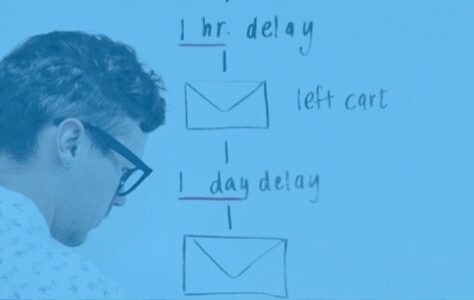A veritable goldmine, Design Thinking is, in theory, one of the most promising methods for creating innovation. Therefore, UX-Designers, project managers, product owners or consultants refer to this approach to design user-centric and innovative experiences. Only, she implementation turns out to be an arduous and complex exercise…

From our feedback, we have developed an approach applicable in the contexts of our missions. And as we believe that sharing our know-how is essential to the evolution of UX-Design, we also train in Design Thinking. Back to our 100% field approach.
Stakeholders: “Me, myself and I”
The stakeholders of a project often form an egregore whose each member seeks to take the project in its direction.
In the end, any attempt at ideation ends up being reduced to the vision of the hierarchical superior...
This is why Design Thinking is often put aside as excellent ideas that cannot be applied here and now.

In addition, there is, from my point of view, a misunderstanding on the issue of Design Thinking, like UX-Design. From now on, it is no longer a question of designing user-centered, unforgettable and differentiating experiences, but of implementing processes allowing the stakeholders of a project to build innovative and human-centered experiences together.
The role of the Design Leader: “Breaking the waves”
By reversing this paradigm, and working for more than a year on the implementation of an approach centered on various contexts and issues according to my missions (industry, start-up, service, banking, training, etc.) , I implemented, trained and accompanied in Design Thinking to create human-centered innovation.
From this feedback, observations, interviews and research in the professional and scientific literature, another approach to Design Thinking has been built:
Not based on the group but on the individual in the group
Proceeding on the principle of “test & learn”, I developed support for stakeholders based on 3 stages: doing – training – coaching. This process follows these steps in order to move an individual from a posture of passive agent of the transformation to an actor/contributor of the process to finally bring him to become the author of the innovation.
Our approach: “Express Yourself”
Noting that we could not reproduce in extenso this method resulting from the feedback of designers from IDEO and D-School who work in California, our approach to Design Thinking has repositioned itself on the individual and his initiative within a group. It was necessary to adapt to the French organizational culture. Many foreigners working in France emphasize this specificity.
Therefore, we have to adapt to our environment. This is one of the determining conditions for successfully implementing Design Thinking in a French company.
Find all of our training courses on our training website.
REACTJS: more information.AGILE SCRUM CERTIFICATION : Certification of the Scrum Institute: more information.
AXURE : Initiation – Prototyping: more information.
ANGULARJS : Initiation – Components: more information.
AGILE SCRUM PRODUCT OWNER : Certification of the Scrum Institute: more information.

Our conviction: “Fail Fast. Succeeded Sooner”
By proceeding by iteration, this three-step rhythm has been refined in order to better cooperate with Agile methods and Lean UX. Succeeding in integrating into the Lean and Agile cycles facilitates the integration of Design Thinking, the acceleration of projects and promotes the transformation of organizations.
I have taught this approach to designers, project managers, digital consultants, product-owners or senior executives for various companies (start-ups, consulting, industry, etc.). Their post-training feedback confirmed the effectiveness of this Design Thinking approach. Thus made immediately operational for non-experts, it makes it possible to evangelize the stakeholders and to seal the first stone of a digital transformation centered on the human being by including the product and the business challenges.
Our advice: “Train today, Design tomorow”
Thus, we have extended this mantra to all of our training:
Share our feedback and our know-how on Design and Innovation.
We discuss their experiences with our consultants and the participants in our training courses. Together we continue to push the User Experience further in a holistic approach and not only focused on interface creation.

We see it in the daily life of our missions and by looking around us: the interfaces are multiplying and diversifying (smartphone, laptop, watch, terminal, automatic cash register, robot, etc.).
It is therefore important to develop an original approach in order to develop a style specific to the contexts and needs of the users for whom we work.
Find all of our training courses on our Training site.
Sébastien, Learning & Development Manager @ UX-Republic
UX-DESIGN: THE FUNDAMENTALS # Paris
SMILE Paris
163 quay of Doctor Dervaux 92600 Asnières-sur-Seine
VISUAL THINKING: CONCRETE YOUR IDEAS # Paris
UX-REPUBLIC Paris
11 rue de Rome - 75008 Paris
DIGITAL ACCESSIBILITY AWARENESS #Paris
SMILE Paris
163 quay of Doctor Dervaux 92600 Asnières-sur-Seine
DIGITAL ACCESSIBILITY AWARENESS #Belgium
UX-REPUBLIC Belgium
12 avenue de Broqueville - 1150 Woluwe-Saint-Pierre
ACCESSIBLE UX/UI DESIGN # Paris
SMILE Paris
163 quay of Doctor Dervaux 92600 Asnières-sur-Seine
AWARENESS OF DIGITAL ECO-DESIGN # Belgium
UX-REPUBLIC Belgium
12 avenue de Broqueville - 1150 Woluwe-Saint-Pierre
STORYTELLING: THE ART OF CONVINCING # Paris
SMILE Paris
163 quay of Doctor Dervaux 92600 Asnières-sur-Seine
UX/UI ECO-DESIGN # Paris
SMILE Paris
163 quay of Doctor Dervaux 92600 Asnières-sur-Seine
DESIGN THINKING: CREATING INNOVATION # Belgium
UX-REPUBLIC Belgium
12 avenue de Broqueville - 1150 Woluwe-Saint-Pierre









